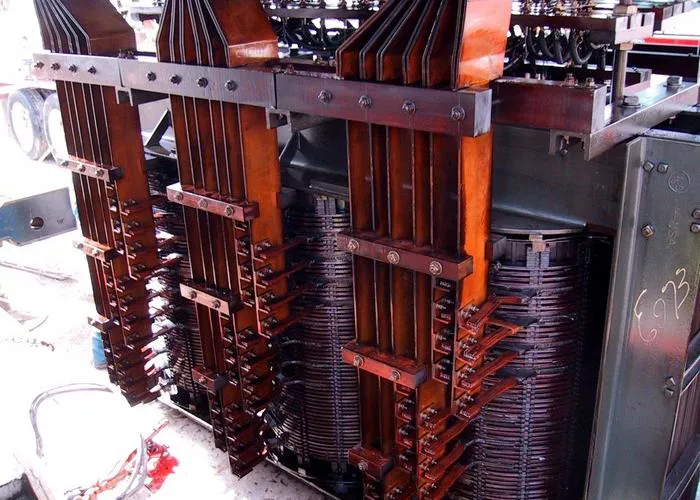In electrical and electronic systems, maintaining a stable voltage supply is crucial for the proper functioning of sensitive equipment. Voltage fluctuations can lead to performance issues, data corruption, or even hardware damage. One effective solution to mitigate voltage instability is the use of a Constant Voltage Transformer (CVT). CVTs are widely used in various industries to ensure a steady and reliable power supply, making them essential in critical applications.
This article explores the working principles, components, advantages, applications, and limitations of constant voltage transformers.
What is a Constant Voltage Transformer (CVT)
A Constant Voltage Transformer (CVT) is a specialized type of transformer designed to provide a stable output voltage regardless of fluctuations in the input supply. Unlike conventional transformers that primarily step up or step down voltages, CVTs maintain a constant output voltage through the principle of ferroresonance.
Ferroresonance is a non-linear magnetic property of certain transformer cores that allows for voltage regulation without active electronic components. This unique characteristic enables CVTs to deliver reliable voltage regulation and transient suppression without requiring complex control circuits.
Working Principle of a CVT
The operation of a CVT is based on the principles of ferroresonance and saturation of the transformer core. The fundamental working mechanism is as follows:
Primary Winding and AC Input:
The primary winding of the transformer receives an alternating current (AC) voltage input, which may be unstable or fluctuating.
Magnetic Saturation and Energy Storage:
The core of the transformer is designed to operate in a highly saturated state. This property allows it to absorb and regulate fluctuations in the input voltage.
The core’s behavior ensures that variations in the input voltage do not significantly affect the secondary output voltage.
Resonant Circuit:
A capacitor is connected to the secondary winding of the transformer, forming a resonant circuit.
This resonance maintains a nearly constant voltage, even if the input voltage fluctuates within a certain range.
Voltage Stabilization:
The combined effect of the resonant circuit and magnetic saturation ensures that the secondary voltage remains stable.
Minor fluctuations in the input voltage are absorbed by the transformer, preventing them from affecting the output.
Output Supply:
The output voltage remains stable, typically within a few percentage points of the nominal voltage, even when the input voltage varies.
Components of a Constant Voltage Transformer
A CVT consists of the following key components:
- Primary Winding: Converts incoming AC voltage into magnetic flux.
- Ferroresonant Core: Made from special magnetic materials that operate in saturation, ensuring voltage regulation.
- Secondary Winding: Provides a stable output voltage.
- Capacitor: Forms a resonant circuit with the secondary winding to maintain constant voltage.
- Enclosure: Protects the internal components from environmental factors and electrical interference.
Advantages of CVTs
CVTs offer several benefits, making them a preferred choice in many applications requiring stable power supplies:
Superior Voltage Regulation:
CVTs maintain a stable voltage output, even with significant fluctuations in input voltage.
Excellent Noise and Surge Suppression:
They filter out electrical noise and transient surges, making them ideal for sensitive electronic equipment.
No Moving Parts:
Unlike mechanical voltage stabilizers, CVTs have no moving parts, leading to higher reliability and lower maintenance requirements.
Short-Term Power Backup:
Due to the energy stored in the ferroresonant circuit, CVTs can provide short-term power backup during brief power outages.
High Durability and Longevity:
CVTs are robust and can operate efficiently for many years with minimal maintenance.
Efficiency in Handling Load Variations:
CVTs can effectively regulate voltage under varying load conditions, making them suitable for a range of applications.
Applications of Constant Voltage Transformers
Due to their reliable voltage stabilization properties, CVTs are widely used in various industries, including:
Medical Equipment:
Used in hospitals and clinics to ensure a stable power supply for devices like MRI machines, CT scanners, and life-support systems.
Computers and IT Infrastructure:
Protects servers, networking devices, and workstations from voltage fluctuations and power disturbances.
Telecommunications:
Ensures stable voltage for communication towers, data centers, and broadcasting equipment.
Industrial Automation:
Provides consistent voltage for CNC machines, robotics, and automated control systems.
Banking and Financial Services:
Used to safeguard ATMs, transaction processing systems, and security surveillance equipment.
Printing and Photocopying Equipment:
Prevents voltage-related faults in high-precision printing and copying machines.
Defense and Aerospace:
Ensures stable power for radar systems, navigation equipment, and control panels.
Audio and Broadcasting Studios:
Provides clean and stable power to recording and broadcasting equipment to avoid interference and noise.
Limitations of CVTs
While CVTs are highly effective in voltage regulation, they do have some limitations:
Lower Efficiency:
Compared to modern electronic voltage stabilizers, CVTs tend to have lower efficiency, leading to energy losses.
Bulkiness and Weight:
Due to their ferroresonant core design, CVTs are generally larger and heavier than electronic voltage regulators.
Limited Voltage Regulation Range:
While they provide excellent regulation within a specific range, extreme voltage fluctuations may require additional stabilizing equipment.
Heat Generation:
CVTs generate significant heat, which may require proper ventilation or cooling measures in high-power applications.
Fixed Frequency Operation:
CVTs are designed for a specific frequency (typically 50Hz or 60Hz) and do not adapt well to varying frequency conditions.
Conclusion
Constant Voltage Transformers (CVTs) play a vital role in maintaining a stable voltage supply for sensitive electrical and electronic equipment. By leveraging the principles of ferroresonance and magnetic saturation, CVTs ensure reliable voltage regulation, noise suppression, and transient protection. Despite some limitations, they remain a popular choice in industries where power quality is critical.
With their robustness, reliability, and ability to handle voltage fluctuations, CVTs continue to be an essential component in medical, industrial, telecommunications, and computing applications. Whether used in hospitals, data centers, or manufacturing plants, CVTs help safeguard equipment and ensure uninterrupted operations, making them an indispensable solution for voltage stability needs.

